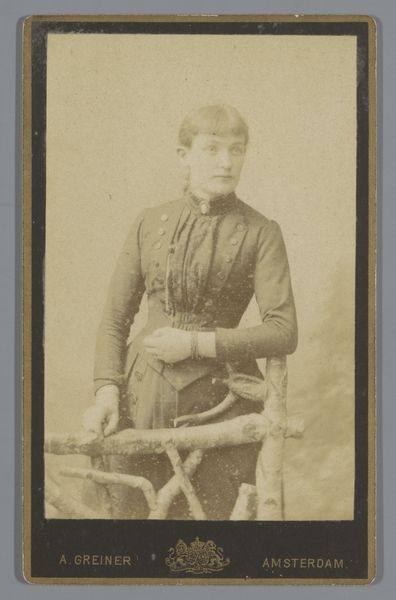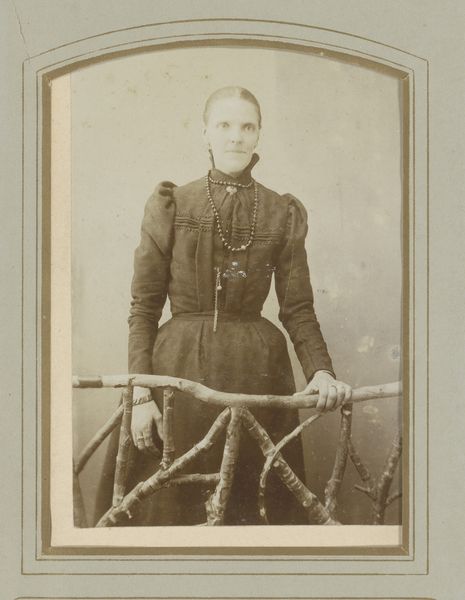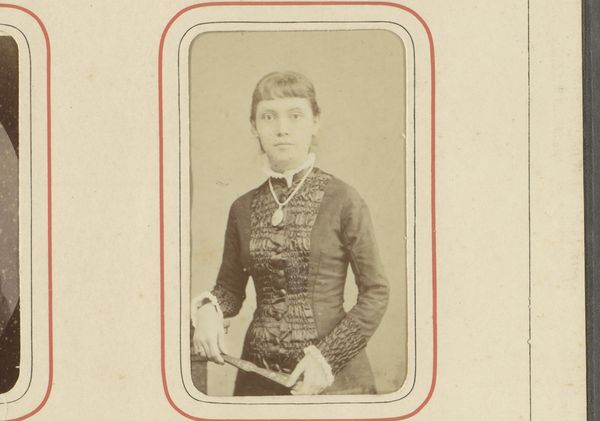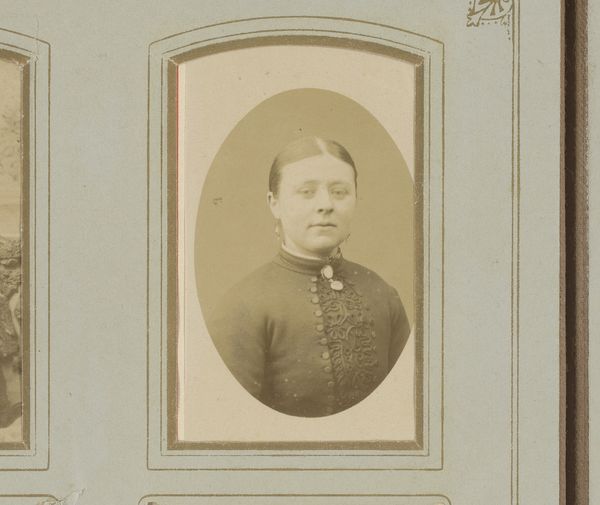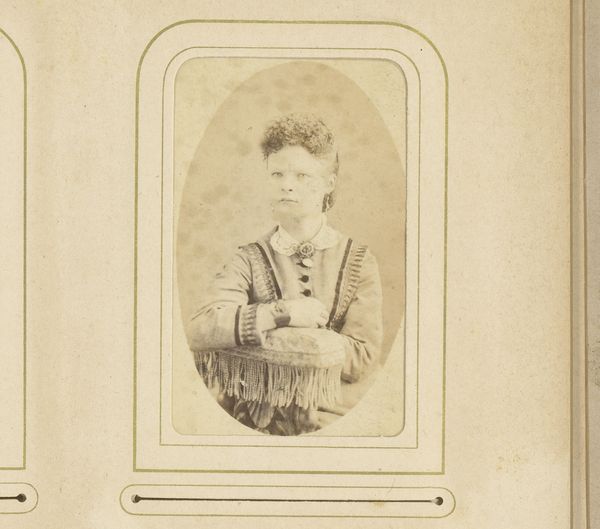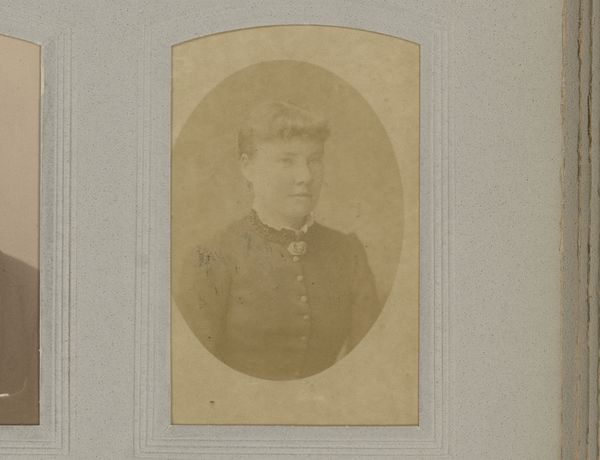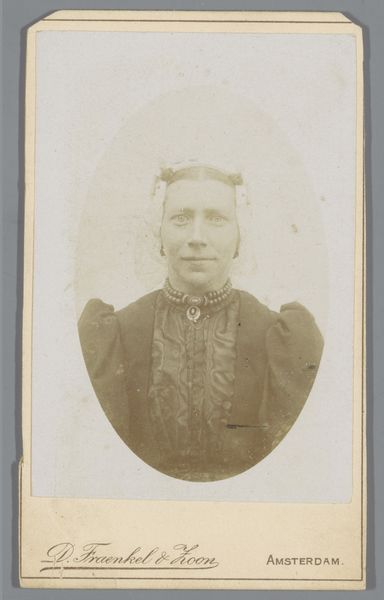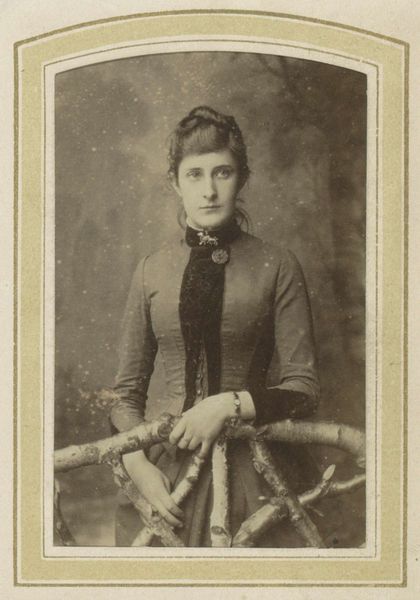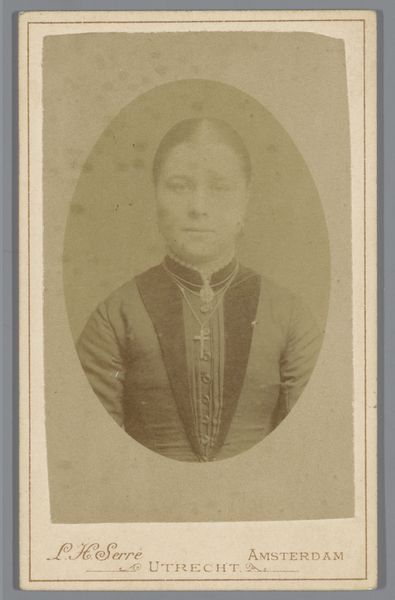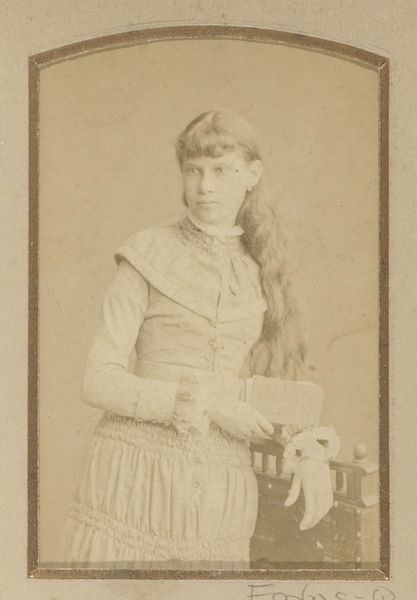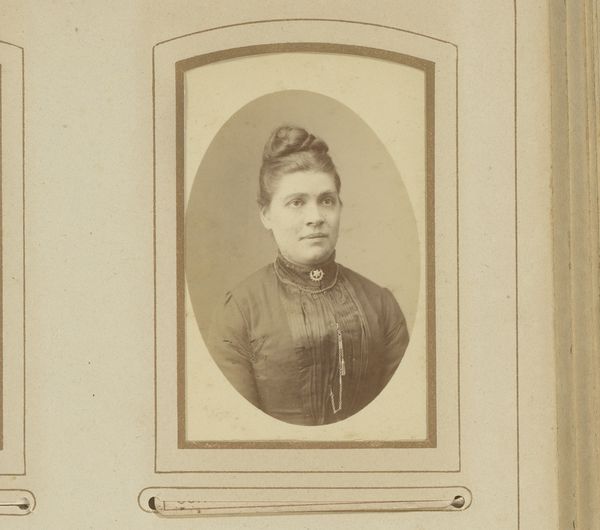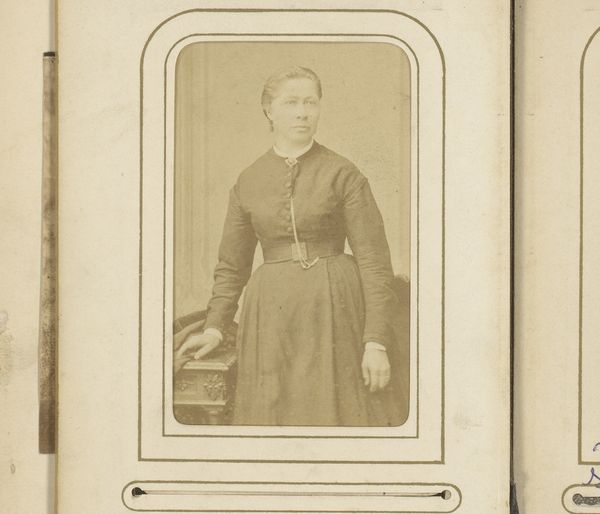
photography, gelatin-silver-print
#
portrait
#
photography
#
gelatin-silver-print
#
realism
Dimensions: height 103 mm, width 64 mm
Copyright: Rijks Museum: Open Domain
Curator: Welcome to the Rijksmuseum. Here, we’re viewing an intriguing gelatin-silver print titled "Portret van een onbekende vrouw," dating from 1879 to 1883. It’s attributed to Adolphe Zimmermans. Editor: The tonality immediately strikes me – such subtle gradations in the gray scale! There’s an almost dreamlike quality to the focus. What does this realism tell us about the social context? Curator: Well, the rise of photography allowed for a new form of democratic portraiture. The emergent middle class were no longer limited to commissioning paintings of themselves and their families. Photography also offered them the ability to participate in a globalized world through collecting photographs from diverse geographic origins. It also allowed for the collection and documentation of ethnographic studies of the faraway cultures being encroached upon. Editor: Interesting, because visually, the formal composition draws the eye immediately to the sitter's face. Then there’s that odd wooden trellis that frames her from the torso down, giving a rather staged sense of depth. There's no strong horizon. I find myself struggling to interpret that strange object and its visual relationship to her person. Is this perhaps symbolic, or more accidental? Curator: It could reflect the subject's social standing or her interest in the pastoral. Perhaps a member of the burgeoning professional leisure classes. The detail of the medal, dangling on a ribbon, further complicates the story, implying possible affiliations to various societal institutions. The realism is a marker of bourgeois success, wouldn't you say? Editor: In terms of sheer pictorial design, the softness around the figure gives her presence a delicate, ephemeral character. But there is also a slight contrast afforded by the woman’s direct gaze, and the way the medal at her collar catches the light. The whole tonal range operates as a kind of code. A code both revealing, and perhaps obscuring, something of her identity, which, as you’ve mentioned, has been otherwise lost to history. Curator: Yes. Considering the time and place, it's easy to forget the social function photography had; as both record and statement, a potent medium to construct and distribute desired public identities. I am more intrigued now than ever by what we can learn from what we see! Editor: Precisely! It's in those very subtle negotiations between representation and reality where the true power of an image like this lies, prompting us to look closer, think deeper.
Comments
No comments
Be the first to comment and join the conversation on the ultimate creative platform.
